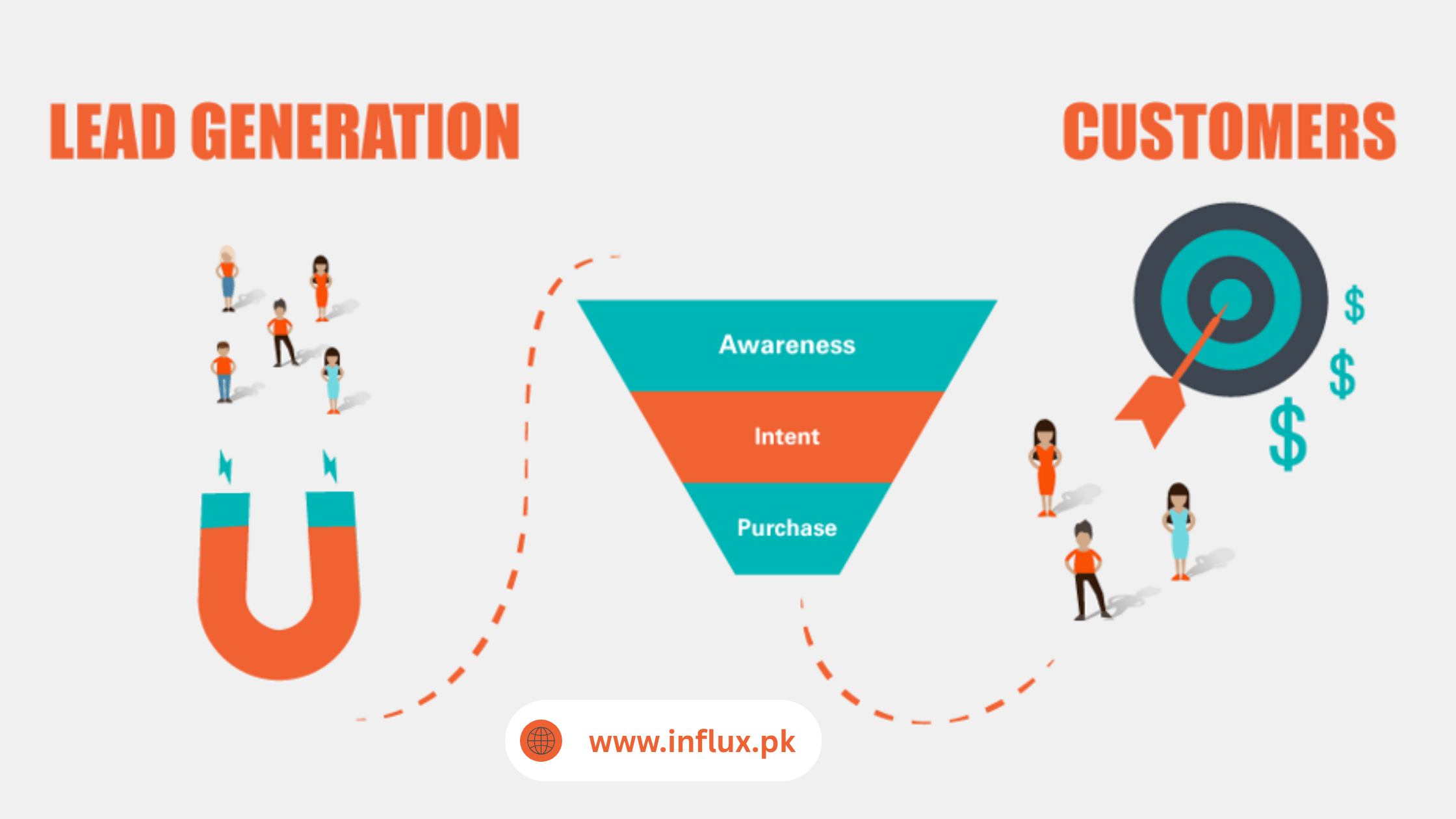Lead Generation in Digital Marketing is how businesses or individuals use online channels to promote their products or services, connect with their target audience, and convert that audience into potential customers. It is a core part of modern digital marketing strategies, designed to increase sales through cost-effective and highly targeted methods.
Unlike traditional advertising—like TV, radio, or print—which often comes with high costs and limited targeting, digital marketing allows businesses to reach a much larger and more specific audience at a lower price. This makes it especially valuable for startups, small businesses, and brands aiming for measurable growth.
Today, digital platforms offer access to almost every market niche. With the right strategy, businesses can easily engage with prospective customers, communicate directly with them, and build lasting relationships. Marketers now rely on real-time research and data analysis to understand customer behavior and choose the most effective tactics to generate qualified leads.
Importance of Lead Generation in Digital Marketing
Lead generation plays a vital role in digital marketing. It helps businesses identify and attract their target audience, ultimately converting them into loyal customers. When done right, lead generation strategies such as SEO, social media marketing, and paid advertising ensure that your brand appears in the right places online, drawing in users who are actively searching for related products or services.
The following are the benefits of lead generation in digital marketing:
- Targeted Customer Engagement: Digital marketing uses data-driven strategies to identify and attract the right audience. It helps businesses connect with users who are genuinely interested in their offerings.
- Increased Brand Visibility: Being present on platforms like search engines, social media, and display networks enhances your brand’s identity. This ensures your business remains top-of-mind for potential buyers.
- Conversion and ROI Growth: Lead generation tactics are optimized to improve conversion rates and ROI. They turn website visitors into qualified leads and eventually into paying customers.
- Trust and Credibility Building: Delivering consistent and valuable content will build trust with your audience, reinforce your brand identity and cultivate stronger customer relationships.
- Strategic Business Expansion: Companies can scale their operations by consistently generating high-quality leads. A healthy sales pipeline supports sustainable business growth.
Digital marketing makes lead generation more precise, measurable, and impactful. Its effectiveness lies in attracting, engaging, and converting the right audience into long-term customers.
Lead Generation Strategies in Digital Marketing
Digital marketing plays a vital role in the growth of both B2B and B2C businesses. It begins with marketers analyzing your industry, audience, and current performance to determine the most effective strategies for increasing leads and achieving sustainable growth. With multiple digital marketing channels, businesses can generate leads, drive sales, and boost revenue. After analyzing key parameters such as the business type and goals, the right mix of channels is selected to deliver measurable outcomes.

The main Lead generation types of Digital Marketing are:
Email Marketing:
Marketers use opt-in forms to collect email addresses from potential buyers. They then send targeted emails highlighting offers, product updates, and value-driven content to maintain engagement and drive conversions.
Content Marketing:
Businesses create and distribute informative and relevant content to educate their audience, improve visibility on search engines, and build trust. This strategy positions your brand as an authority and keeps new and existing customers informed.
Social Media Marketing:
Brands leverage platforms like Facebook, Instagram, LinkedIn, and Twitter to share product information, visuals, reels, and links. Enhancing social media engagement from a business perspective helps attract large audiences, increase interaction, and drive lead conversion through a consistent and strategic online presence.
Search Engine Optimization (SEO):
SEO improves your website’s structure, keyword usage, and performance to enhance visibility on search engines like Google. A well-optimized site draws in organic traffic and turns visitors into potential buyers by offering valuable and relevant content.
Pay-Per-Click (PPC):
By running paid ad campaigns across platforms, businesses target specific audiences and drive quick website traffic. This boosts brand exposure, fills the sales funnel, and increases conversion rates with measurable ROI.
Webinars and Live Sessions:
Companies host webinars and live events to share insights, provide solutions, and engage directly with their audience. These sessions build credibility, answer real-time customer queries, and foster long-term relationships that generate quality leads.
Many digital marketing strategies are available, each performing differently depending on your business model. Exploring and aligning these channels with your business goals will help you choose the most effective path for generating leads and achieving sustainable growth.
How do you create a Digital Marketing strategy for lead Generation?
Creating an effective digital marketing strategy for lead generation is crucial for any business aiming to grow its customer base and increase revenue. This involves understanding the business domain, identifying the right audience, conducting market and competitor analysis, and choosing the most appropriate marketing channels. A well-planned strategy aligns business goals with the right tactics and allows continuous tracking and optimization to maximize ROI and conversion rates.

The process of creating a lead generation campaign is as:
- Business Industry Understanding and Revenue Goals: Understand the business model and desired revenue goals. This helps identify how leads—such as email signups or form submissions—will be tracked and converted.
- Know Your Target Audience and Develop Buyer Personas: Conduct detailed market research to understand your niche audience’s needs, behavior, and challenges. Use analytics tools and surveys to develop accurate buyer personas.
- Competitor Analysis and Market Research: Analyze your competitors’ content, ads, and social media to identify market gaps. This helps uncover unique opportunities to position your brand effectively.
- Choose the Right Digital Marketing Strategy: Based on your industry analysis and lead generation goals, select from PPC, SEO, content marketing, email campaigns, or webinars. Not all channels fit every business.
- Implementation, Monitoring, and Analysis: Launch the strategy with compelling content and monitor performance regularly. Use data analytics tools to track ROI, tweak messaging, and optimize design for better results.
All these steps are interconnected and essential. A deep understanding of the business and market enables you to choose the right strategy and make impactful adjustments over time. With ongoing technological evolution and AI integration, digital marketing trends for lead generation continue to shift, making ongoing research and staying updated with the latest strategies crucial for sustaining your business.
Conclusion
Lead generation in digital marketing is the strategic process of identifying, attracting, and converting potential customers into buyers. It involves reaching out to the right audience, engaging them with valuable content, and encouraging them to take action. Key digital marketing channels for lead generation include SEO, content marketing, social media marketing, PPC, email marketing, and AI-powered tools.
To achieve meaningful results, it’s crucial to understand your business and its goals first and then choose the most suitable digital marketing strategies. Monitoring your campaigns, analyzing performance, and making necessary adjustments helps optimize results and strengthen customer relationships.








